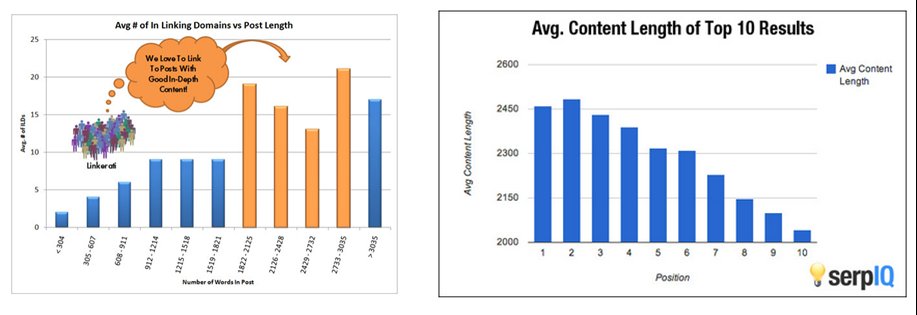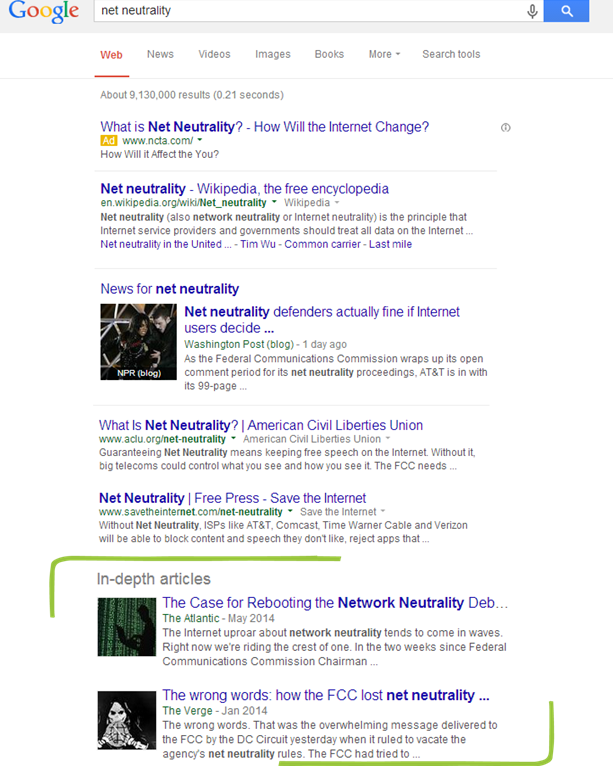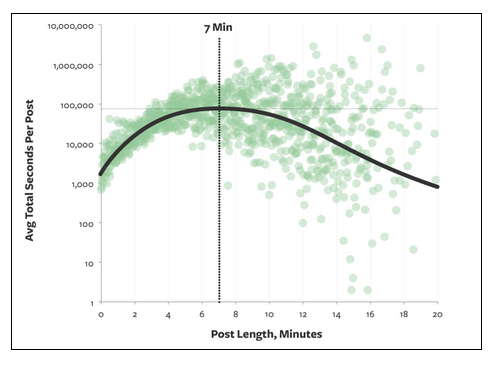You need to create content for your website that people are actually going to read, or the hard work and money you put into your corporate blog will seem fruitless. When you’re constantly inundated with messages like …
- Attention spans are shrinking
- Don’t expect readers to make it to the end of an article
- Consumers want things in easily digestible formats
… it’s only natural to get into a ‘shorter is better’ mentality. To be fair, shorter IS better sometimes. There are plenty of movie trailers that manage to capture all the good parts of a full-length film, but there are others that hardly do it justice because they only offer a snapshot of the story. The point is – there’s a growing case for long-form content, and your marketing strategy might be better for it. Longer, in-depth pieces provide both SEO and thought leadership benefits.
Longer content builds expertise, authority and trust
A recent version of Google’s Quality Rating guidelines were leaked by one of the third-party testers the search engine uses to determine whether algorithms are filtering results the way it wants. This version put a lot of emphasis on expertise, authority and trustworthiness (EAT).
If Google is asking testers to consider a page’s EAT qualities when assessing if it’s a good result for a given query, marketers can surmise that this is what algorithms like Hummingbird are also designed to do. If website content comes across as shallow, thin or irrelevant, it will certainly lose EAT points. But on the flip side, content that’s rich with information, action-packed with insights and demonstrates a depth of knowledge users crave will – theoretically – climb to the top of SERPs.
“There’s no minimum length, and there’s no minimum number of articles a day that you have to post, nor even a minimum number of pages on a website.” – John Mueller, Google Webmaster Trend analyst.
Content doesn’t have to be long to fall into the EAT category – and adding word count to a shorter piece won’t put it there. Google’s experts have said there’s no ‘right size’ for content, and long pieces won’t automatically do better than short pieces.
“There’s no minimum length, and there’s no minimum number of articles a day that you have to post, nor even a minimum number of pages on a website,” said John Mueller, Google Webmaster Trend analyst. “Don’t fill your site with low-quality content, instead work on making sure that your site is the absolute best of its kind.”
The idea is that if you’re creating lengthier pieces, you have more space to share your expert opinion and the data to support it. A heavily-researched white paper or an in-depth eBook that walks readers through a concept or process usually has more weight than a 100-word blog post on a similar subject. When you demonstrate that you know your field inside and out, to the point where you can make it accessible to the average reader, you establish yourself as a thought leader and join that group of web authorities.
Google’s in-depth results create a designated place for long-form content
On top of the broad focus toward authoritative, expert content, Google has created an entire section for in-depth articles. Google said this feature is intended to give high-quality website content a prominent position in results pages. What this means for marketers: Sites publishing in-depth articles can get on page one if Google’s algorithms perceive their pieces to have enough caliber.
Here’s an in-depth section for the search term, “Net neutrality.” The articles in this section are certainly longer than your average web content – spanning a thousand words or more, rather than a few hundred.
Another benefit is that content within the in-depth category will reportedly keep its Authorship images – a feature that was recently stripped from most written content. The perk? Rich snippets like Authorship images were correlated with 150 percent higher click-through rates. More clicks means more traffic, leads and sales opportunity.
Studies find longer content ranks better
For a moment, ignore the fact that people now reportedly have shorter attention spans than goldfish. A study by Medium showed that readers pay the most attention to posts that take seven minutes to read. When you calculate that out, it adds up to about 1,600 words.
Not only that, but data compiled by Moz’s Casey Henry found that posts with between 1,800 and 3,000 words tend to get the most links because people prefer to reference high-quality, in-depth content. There are even findings that suggest longer pieces flat out rank better than shorter content. SERP IQ found that on average, longer articles rank No. 1 and take up the first page. Of course, I’m sure you can find plenty of examples where that’s not the case – it’s all about information quality and density.

Let’s get one thing straight – this isn’t shallow content in sheep’s clothes
Again, longer content isn’t the solution to your SEO woes. There’s a time and a place for concise content. We are living in an era when breaking news has to fit into 140 characters, and all good writers exercise the 10 percent rule – trimming at least 10 percent of the word count before publication to keep the narrative tight.
Adding word count and fluff to make a piece longer will not position you at the top of search results. It will only tarnish your relationship with readers and encourage people to seek information elsewhere. I’m simply suggesting that you embrace long-form content where it’s appropriate, knowing that people will pay attention if you’re giving them the information they want in an engaging format.





